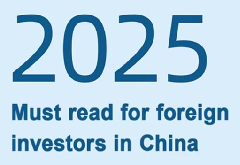Rules for Unique Device Identification System
Rules for Unique Device Identification System
Article 1 The Rules are hereby formulated in accordance with the Regulations on Supervision and Administration of Medical Devices, so as to regulate the establishment of unique device identification system (UDI system) and strengthen the whole-life cycle management of medical devices.
Article 2 For medical devices sold and used within the territory of the People's Republic of China, their UDI system shall comply with the requirements of the Rules.
Article 3 The UDI System of Medical Device mentioned in these Rules consists of the unique device identifier (UDI), UDI data carrier and unique device identification database (UDID).
UDI refers to the code on any medical device itself or its package comprising figures, letters or symbols, which is used for unique identification of medical devices.
UDI data carrier refers to the data media for storing or transporting UDI.
UDID refers to the database storing device identifier (UDI-DI) and associated information of UDI.
Article 4 The UDI System shall be constructed by actively referring to international standards and following the principles of guidance by regulatory authority, implementation by enterprise entity, overall coordination of all the parties concerned and step-by-step implementation.
Article 5 The National Medical Products Administration (NMPA) shall be responsible for establishing the rules for UDI System, formulate the plan of UDI System construction, promote the parties concerned to actively apply UDI, and improve the life-cycle management of medical devices.
Drug regulatory department of the province, autonomous region and municipality directly under the central government shall be responsible for guiding and supervising registrants/filing entities to carry out the construction of UDI System within their respective administrative regions.
Article 6 Registrant/filing entities shall be responsible for creating and maintaining UDI according to the Rules, assigning UDI data carrier on the product or package, uploading relevant data and using UDI to strengthen the life-cycle management of products.
Manufacturers, distributors and medical institutions of medical devices are encouraged to actively use UDI to carry out relevant management.
Article 7 UDI shall include device identifier (UDI-DI) and production identifier (UDI-PI). The UDI-DI shall be the only code to identify registrant/filing entities, model and specification and packaging of medical device and the UDI-PI shall be composed of the code to identify relevant data in the production process of medical device. In accordance with regulatory requirements and the needs of practical application, such data as serial number, production batch number, production date and expiry date of the medical device may be included in the PI.
Where a medical device experiences any change which may affect the device's identification, traceability or regulatory requirements thereof, a new UDI-DI shall be created.
Where the sale or use of any medical device is suspended, its UDI-DI can no longer be applied for use on other medical devices; if the sale or use thereof is restarted, the original UDI-DI can be used again.
Article 8 UDI shall adhere to such requirements as uniqueness, stability and expandability.
Uniqueness means that UDI shall comply with the requirements of device identification.
Stability means that UDI shall be co-related to the basic features of the corresponding product, and UDI-DI shall remain the same unless basic characteristics of the product are changed.
Expandability means that UDI shall be able to adapt to the continuous development of regulatory requirements and practical application.
Article 9 Registrant/filing entities shall create and maintain UDI according to the compiling standards for UDI.
The compiling standards for UDI shall meet relevant standards developed by code issuing agencies as required by the NMPA and the Rules.
Article 10 The code issuing agencies shall be the corporate entities within the territory of China, and possess the complete management system and operation system, so as to ensure the uniqueness of the UDI created as per its standards and in compliance with relevant requirements for national data security.
The code issuing agencies shall provide the registrant/filing entities with procedures of implementing its standards and guide the implementation, upload the coding standards to the UDID and perform dynamic maintenance, and submit the report of UDI established as per its standards in previous year to the NMPA prior to January 31 of each year.
The State encourages code issuing agencies to establish unique identification operation system as per relevant international standards.
Article 11 UDI data carrier shall satisfy such requirements as automatic identification and data capture (AIDC) and human readable information (HRI). In case of limited space or limited use, priority shall be given to the carriers with AIDC.
AIDC technologies include such forms as one-dimensional bar code, two-dimensional bar code or radio frequency tag (RF tag). Advanced AIDC technologies are encouraged.
In case of using one-dimensional bar code, UDI-DI and UDI-PI can be connected in series or in multi-line parallel. In case of using RF tag, the simultaneous use of one-dimensional bar code or two-dimensional bar code shall be secured.
Article 12 Registrant/filing entities shall select the data carrier standard matching with the UDI created, affix UDI data carrier to the minimum sales units and higher levels of packaging of medical device or the medical device itself marketed in their names, and guarantee that UDI data carrier is firmly affixed, clear and readable during the distribution and usage of medical devices.
Article 13 The NMPA shall formulate relevant standards and specifications applicable to UDI data, and organize the establishment of the UDID for public reference.
Article 14 Registrant/filing entities shall upload, maintain and update relevant data in the UDID in accordance with relevant standards or specifications, and be liable for the authenticity, accuracy and completeness of the data.
Article 15 Registrant/filing entities shall provide the UDI-DI in the registration/filing management system when applying for registration, registration change of medical device or filing.
Registrant/filing entities shall upload UDI-DI and relevant data into the UDID prior to marketing and sales of the product.
Article 16 Drug regulatory departments can retrieve and manage relevant data according to regulatory needs.
All the parties concerned are encouraged to adopt advanced information means and apply UDI to manage the production, distribution and usage of medical devices.
Article 17 The following terms are defined as follows:
Automatic identification and data capture (AIDC) means the technology directly inputting data into computer system or other equipment controlled by microprocessor without using keyboard.
Human readable information (HRI) means direct recognition of code by human eyes matching with the medium of machine readable information.
Article 18 The Rules shall be implemented as of October 1, 2019. Specific steps for the classification implementation shall be formulated and promulgated separately.
Note: In case of any difference in interpretation between the English version and the Chinese version, the Chinese version shall prevail.



